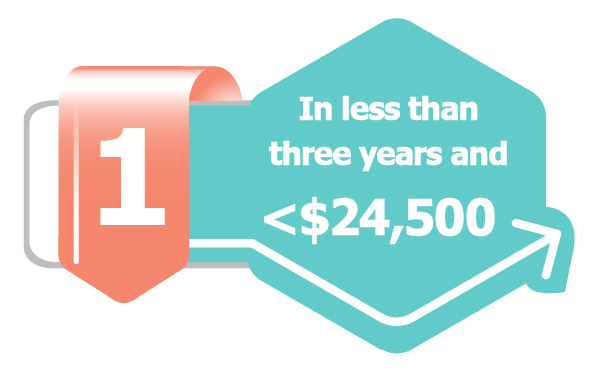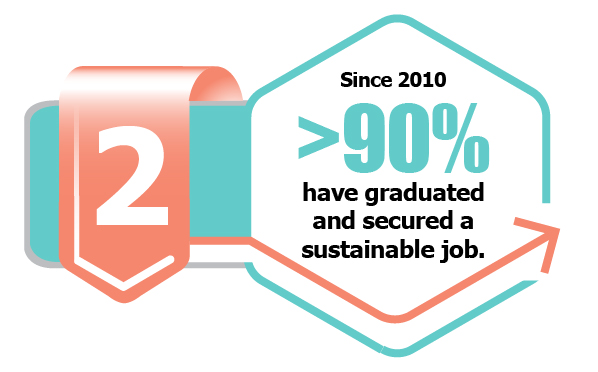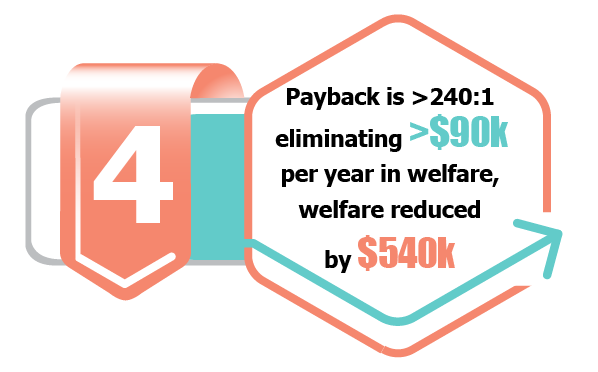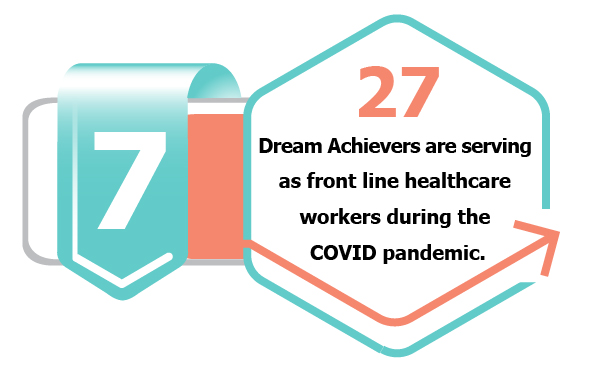
Issue, Opportunity, Impact
The Issue
Millions of people are underserved and trapped in intergenerational poverty. In 2005, Carol Kallendorf-Speer, PhD., and Jack Speer founded The Dream Come True Foundation with the aspiration to disrupt that cycle. Our Dream Achievers have demonstrated resilience, determination, and resourcefulness. They are willing to work hard to receive the education and skills that will lead to success for themselves and their families, and we are here to support them. With our visionary advisory board, dedicated board of directors, staff, mentors, and community partners, we are making an impact.
One Dream Achiever at a time.
The Opportunity
Poverty is not just a fundamental issue; it’s a family issue. According to the National Center for Children in Poverty, “Social and economic deprivation during childhood and adolescence can have a lasting effect on individuals, making it difficult for children who grow up in low-income families to escape poverty when they become adults. Because the negative effects of deprivation on human development tend to cumulate, individuals with greater exposure to poverty during childhood are likely to have more difficulty escaping poverty as adults.”
While exceptional potential and talent are equally distributed, opportunity is not. With more than 75% of our Dream Achievers caring for a family, we are essentially helping two generations escape the binds of intergenerational poverty. Forever.
5 Disciplines of Execution





The Impact
Offering consistent and compassionate services to our Dream Achievers and their families forever changes the trajectory of their lives—they gain financial independence, begin paying taxes, become homeowners, and save for the future. They become the parents they want to be for their children, offering a stable home environment, focusing on education, and being role models. And they don’t fall back into poverty. While our impact is sustainable, the need is growing.
We continue to monitor our metrics of success to ensure those individuals we serve are reaching their dreams.

In less than three years and at the cost of less than $24,500, our Dream Achievers move out of poverty with education and into a sustainable job paying a middle-income wage. We work with partners to provide an additional $12,000-15,000 for a total of less than $40,000.

- Since 2010, >90% of our Dream Achievers have graduated and have secured a sustainable job paying a middle-income wage or higher. But, most importantly, they have not fallen back into poverty.

- Seven Dream Achievers have graduated in the past year and were recruited and selected for high-demand jobs in Austin and Central Texas.

Life-time payback is >240:1 by eliminating more than $90,000 per year in government welfare spending and contributing to the economy as tax-paying citizens. Statistics are for a family of four. Total welfare costs have risen to $22,735 per person in poverty, totaling more than $90,000 for a family of four even though the Poverty Threshold for such a family is $26,496.
Our program has reduced annual government spending on welfare by an additional $540,000 for a total of more than $2.3 million per year of reduction.
- With almost 30 Dream Achievers graduating and earning middle-class income, we have eliminated more than $8,100,000 in government assistance. This number represents the cumulative welfare savings per Dream Achiever family over the last 11 years.

Dream Achievers pay taxes, contribute to 401K and retirement, obtain advanced degrees, and are promoted within their careers.
- Our Dream Achievers have contributed more than $5,000,000 to the economy.

- Dream Achievers are often first-generation post-high school education graduates and the first in their families to break the cycle of poverty.
- Their move to independence and their impact is multiplied by further transforming our community as many choose to pay it forward as role models, mentors, and volunteers.

- 27 Dream Achievers are serving as front-line healthcare workers during the COVID pandemic.
2020 Government data provided by FederalSafetyNet.com
